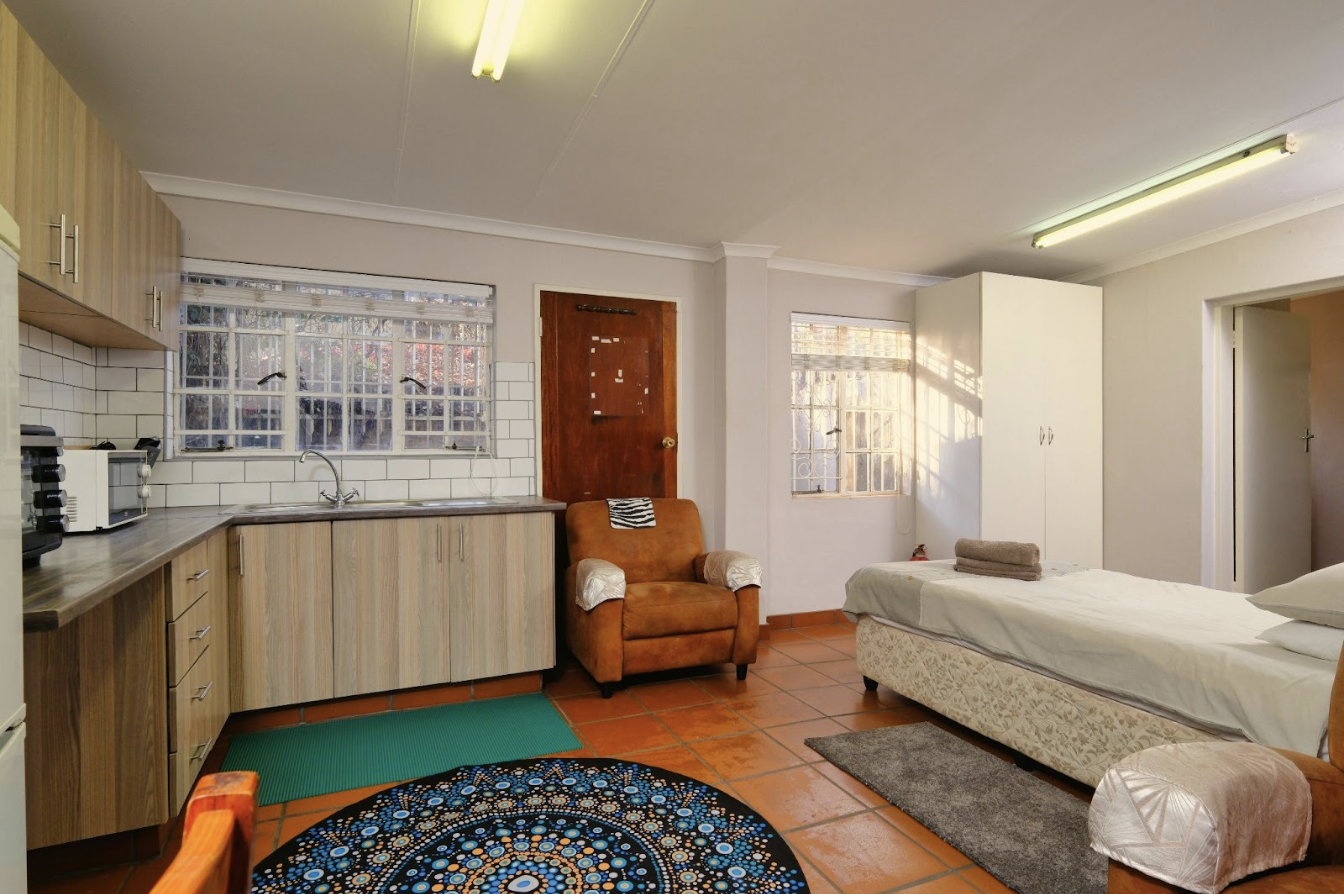If you’re a homeowner in an RA-1 zoned lot in Los Angeles, you’re likely familiar with the Residential Floor Area (RFA) limit of 25%. This restriction, designed to maintain the suburban character of RA zones, can feel constraining when planning expansions or new builds. But did you know there are legal and strategic ways to exceed this limit? From design bonuses to variances and exempted areas, this 2,000-word, SEO-optimized blog post dives deep into the methods LA homeowners can use to maximize their property’s potential. Packed with facts, zoning insights, and practical tips, this guide is your roadmap to navigating the complex world of Los Angeles zoning regulations.
Understanding RA-1 Zoning and the 25% RFA Limit
In Los Angeles, RA-1 zoning falls under the "RA" Suburban Zone, which balances residential living with limited agricultural uses, such as small-scale farming or horse-keeping. RA zones typically require larger lot sizes—17,500 square feet or more—and are designed to preserve open space and low-density development. The RFA, as defined in the Los Angeles Municipal Code (SEC. 12.03), refers to the total floor area within the exterior walls of all buildings on a lot, excluding specific exemptions like covered parking (up to 400 sq ft) or small detached structures (up to 200 sq ft).
For RA-1 zones, the RFA limit is set at 25% of the lot area for lots under 20,000 square feet. For example, on a 17,500 sq ft lot, the maximum RFA would be 4,375 sq ft. This cap ensures that homes don’t overwhelm the lot’s open space, but it can restrict homeowners looking to expand. Fortunately, the Los Angeles Municipal Code and state laws provide several pathways to legally exceed this limit, which we’ll explore in detail below.
Method 1: Leverage Design Bonuses for a 20% RFA Boost
One of the most straightforward ways to exceed the 25% RFA limit is by qualifying for a design bonus. According to SEC. 12.07 of the Los Angeles Municipal Code, homeowners in RA zones can increase their maximum RFA by up to 20% by meeting specific architectural design criteria. This bonus effectively raises the RFA limit to 30% of the lot area, offering significant additional floor space.
How Design Bonuses Work
To qualify, homeowners must incorporate design features that reduce the visual bulk of the structure. Common criteria include:
- Step-Back Design: Ensuring that each story above the base floor is no more than 75% of the base floor’s area.
- Front Setback: Stepping back 25% of the building’s width by 20% of its depth from the front lot line.
For a 17,500 sq ft lot, a 20% bonus on the standard 4,375 sq ft RFA adds 875 sq ft, bringing the total allowable RFA to 5,250 sq ft. This extra space can accommodate larger living areas, additional bedrooms, or even home offices—perfect for growing families or modern work-from-home needs.
Practical Tips
- Work with an architect familiar with LA’s zoning code to design a home that meets bonus criteria.
- Submit detailed plans to the Los Angeles Department of City Planning for approval, ensuring compliance with all design standards.
- Be prepared for a review process, as the city scrutinizes bonus applications to ensure they align with neighborhood aesthetics.
Method 2: Apply for a Variance Based on Hardship
Another powerful tool for exceeding RFA limits is a zoning variance. Variances are exceptions to standard zoning rules granted by the city when a homeowner demonstrates “unnecessary hardship” or “practical difficulty.” These could include unique lot shapes, steep topography, or other site-specific challenges that make strict adherence to the 25% RFA limit unreasonable.
Legal Basis for Variances
The process for obtaining a variance is outlined in the Los Angeles Municipal Code and supported by legal precedents like Walnut Acres Neighborhood Assn. v. City of Los Angeles (2015), which upheld variances for unique property conditions (Schorr Law, APC). To succeed, homeowners must prove:
- The property has exceptional circumstances (e.g., irregular shape or slope).
- Strict application of the RFA limit would cause hardship.
- The variance won’t harm the public welfare or neighborhood character.
Case Study Insight
While specific case studies for RA-1 zones are scarce, anecdotal evidence from platforms like Reddit suggests homeowners have successfully obtained variances for oversized homes by arguing lot-specific constraints (Reddit Real Estate Discussion). For example, a homeowner with a narrow, elongated lot might argue that the 25% RFA limit prevents reasonable development, justifying a variance for additional floor area.
How to Apply
- Hire a zoning attorney or planner to prepare a compelling variance application.
- Gather evidence, such as topographic surveys or lot diagrams, to demonstrate hardship.
- Attend public hearings, as variances require community input and approval from the Zoning Administrator or Board of Zoning Appeals.
Method 3: Explore RFA Districts for Higher Limits
For homeowners in designated “RFA” Residential Floor Area Districts, exceeding the 25% RFA limit becomes easier. Established under SEC. 13.13 of the Los Angeles Municipal Code, RFA Districts allow for higher (or lower) RFA maximums than standard zoning rules, provided they enhance neighborhood character and align with community plans. These districts must cover at least 100 acres and include RA zones, making them a potential option for some RA-1 properties.
How RFA Districts Work
RFA Districts are created through a legislative process involving community input and city council approval. If your property falls within such a district, the RFA limit could be significantly higher than 25%, depending on the district’s specific regulations. For example, a district might allow 35% RFA to encourage larger homes while maintaining aesthetic standards.
Challenges and Opportunities
Finding out if your property is in an RFA District can be tricky, as specific examples are not widely publicized. Check with the Los Angeles Department of City Planning or review your community plan to confirm. If your area isn’t in an RFA District, you could advocate for its creation, though this is a lengthy process requiring community support.
Practical Tips
- Use the city’s ZIMAS tool to check your property’s zoning and district status.
- Consult with a planner to understand if an RFA District applies or could be proposed for your neighborhood.
- Engage with neighbors, as RFA Districts require collective agreement to balance development and preservation.
Method 4: Maximize Exempted Areas for Extra Space
A clever way to effectively exceed RFA limits is by utilizing areas that don’t count toward the RFA calculation. The Los Angeles Municipal Code exempts certain spaces, allowing homeowners to add usable floor area without breaching the 25% cap.
Exempted Areas Include:
- Basements: Exempt if the upper surface is no more than 2 feet above grade (3 feet in hillside areas under specific conditions).
- Covered Parking: Up to 400 sq ft of covered parking areas, such as carports or garages, are excluded.
- Detached Accessory Buildings: Structures up to 200 sq ft, like sheds or small studios, don’t count toward RFA.
Strategic Use
By incorporating a basement or small detached building, homeowners can add significant usable space. For instance, a 1,000 sq ft basement could house a home theater or guest suite without impacting the RFA limit. Similarly, a 200 sq ft detached office can provide extra functionality while staying exempt.
Practical Tips
- Ensure basements meet grade requirements to qualify for exemption, as this is strictly enforced.
- Design small accessory buildings to stay under 200 sq ft, avoiding RFA inclusion.
- Work with a contractor to maximize exempted spaces while complying with building codes.
Method 5: Navigate ADU Regulations for Additional Floor Area
Accessory Dwelling Units (ADUs) are a hot topic in California, thanks to state laws promoting their construction to address housing shortages. In RA-1 zones, ADUs are permitted, but their impact on RFA limits is nuanced.
ADUs and RFA
The RFA definition includes all buildings on a lot, suggesting that ADUs count toward the 25% limit unless they fall under exemptions (e.g., detached units up to 200 sq ft). However, California state law (Government Code Section 65852.2) exempts ADUs up to 800 sq ft from certain local bulk and massing limits, which may offer some flexibility. In practice, Los Angeles’ ADU ordinance likely includes larger ADUs in RFA calculations, limiting their ability to exceed the cap (Los Angeles ADU Ordinance).
Strategic Use
A small detached ADU (up to 200 sq ft) can be exempt, adding usable space without affecting RFA. Larger ADUs, while counting toward RFA, can still provide valuable living space within the 25% limit, especially for multi-generational households or rental income.
Practical Tips
- Confirm ADU RFA status with the city, as local interpretations vary.
- Design ADUs to maximize functionality within exemption limits (e.g., a compact 200 sq ft studio).
- Explore state law protections to challenge restrictive local rules, if applicable.
Additional Considerations for RA-1 Homeowners
Navigating RFA limits in RA-1 zones comes with additional factors to consider:
Hillside Areas
If your property is in a hillside area, the Baseline Hillside Ordinance may apply, offering minimum RFA guarantees and bonuses (e.g., 30% for lots not meeting minimums). Check your property’s status using ZIMAS to confirm (Baseline Hillside Ordinance).
Community Plans
RFA districts and variances must align with community plans, which outline neighborhood development goals. Review your local plan to ensure compliance and strengthen your case for bonuses or variances.
Professional Guidance
Given the complexity of zoning laws, hiring a zoning attorney, architect, or planner is highly recommended. These experts can navigate variances, design bonuses, and RFA district applications, saving time and ensuring compliance.
Why Specific Case Studies Are Hard to Find
Despite extensive research, specific case studies of RA-1 homeowners exceeding RFA limits are scarce. This may be due to the private nature of zoning approvals, limited public access to planning commission decisions, or the case-by-case nature of variances and bonuses. Anecdotal discussions on platforms like Reddit suggest some homeowners have succeeded through variances or oversights, but verified examples are lacking (Reddit Real Estate Discussion). This underscores the importance of professional assistance to uncover precedents or build a strong case.
Conclusion: Unlock Your RA-1 Property’s Potential
Exceeding the 25% RFA limit in LA’s RA-1 zones is not only possible but also achievable through strategic planning and regulatory know-how. By leveraging design bonuses, applying for variances, exploring RFA districts, maximizing exempted areas, and carefully integrating ADUs, homeowners can significantly expand their living space while staying compliant. The key is understanding the Los Angeles Municipal Code, aligning with community plans, and working with experts to navigate the process.
Ready to maximize your RA-1 property? Start by checking your zoning status on ZIMAS, consulting a zoning professional, and exploring the methods outlined above. With the right approach, you can turn your vision for a larger, more functional home into reality.



